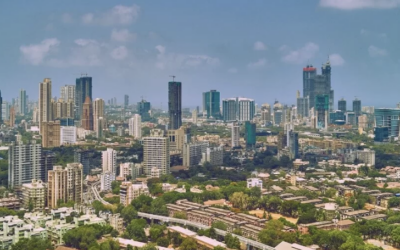Update for September, 2018: Thailand ranks at the same spot (30th place) in this year’s competitiveness index as in 2015 when this article was originally published. As such, Thailand’s problems remain and this article is still very relevant.
International Institute for Management and Development (IMD), a leading business school with campuses in Switzerland and Singapore, released their 2015 World Competitiveness Ranking.
Thai competitiveness dropped one spot in the rankings from 29th to 30th – the same spot it held back in 2012. They faced the third year of continuous decline since 2013 when the country was ranked 27th.
During times of instability, Thailand tends to suffer in business competitiveness rankings. The Kingdom has been under marshal law since a coup in 2013.
Recommendations from the IMD, however, place more emphasis on Thailand’s long-term challenges. They also said the country should promote innovative, high-value industries to sustain growth over a longer period.
Other recommendations from the institute include reforming Thailand’s education and healthcare systems. They suggest making the government and its processes more transparent too.
“A general analysis of the ranking shows top countries are going back to basics,” said Arturo Bris, the IMD World Competitiveness Centre’s director.
Thai Competitiveness Better in Some Ways than Others
Thailand’s best ranking is in the employment category. The nation benefits from one of the world’s lowest unemployment rates at just 0.54% at the end of 2014, comparing regionally with 7.6% in the Philippines and Malaysia’s 3.2%.
The report noted the Kingdom made gains in simplifying the process of obtaining construction permits.
Meanwhile, the health and environment category is Thailand’s weakest area at 54th. Factors leading to this poor ranking include deforestation, field burning, and bad healthcare services in rural areas.
Business legislation and education also received low rankings. The report criticized Thailand’s noncompetitive public education system. Legislation is currently in a state of change under Thailand’s military government.
“Productivity and efficiency are in the driver’s seat of the competitiveness wagon. Companies in those countries are increasing their efforts to minimize their environmental impact and provide a strong organizational structure for workforces to thrive,” said Bris.
The IMD releases several other reports, one of which is its annual World Talent Report. It ranks countries based on their ability to attract, develop, and train talent.
Thai competitiveness dropped seven places in the report from 27th to 34th amid political uncertainty in the World Talent Report’s latest edition.
A New Reason for Thailand to Compete
ASEAN Economic Community, or AEC, took effect in December of 2015. It should make the Southeast Asian region more competitive once it gathers momentum.
This new economic union aims to promote a freer flow of trade, labor, and investment. While similar to the European Union in some ways, the AEC will not have a shared currency or deeper political integration.
“There will be no shortage of funding coming from within ASEAN, the Asia Pacific or even the US and Europe. These investments can bring about badly needed capital for some countries”, said a report by the United States International Trade Commission.
The IMD’s report is one indicator of which countries may take an early lead when the AEC comes to fruition.
Singapore has long been the highest ranked country in Southeast Asia. They climbed to third place in the world and took Switzerland’s spot.
Malaysia also scored highly, ranking as ASEAN’s second most competitive country. They dropped to 14th place from 12th in 2014 though.
The Philippines and Indonesia are the last two of the five nations in ASEAN ranked by the IMD. The former rose by one spot from 42 to 41, while the latter slid from 37 to 42.
Skip the Next Western Recession
Learn the best places to invest - and where to avoid - by downloading our free Investment Cheat Sheet.







